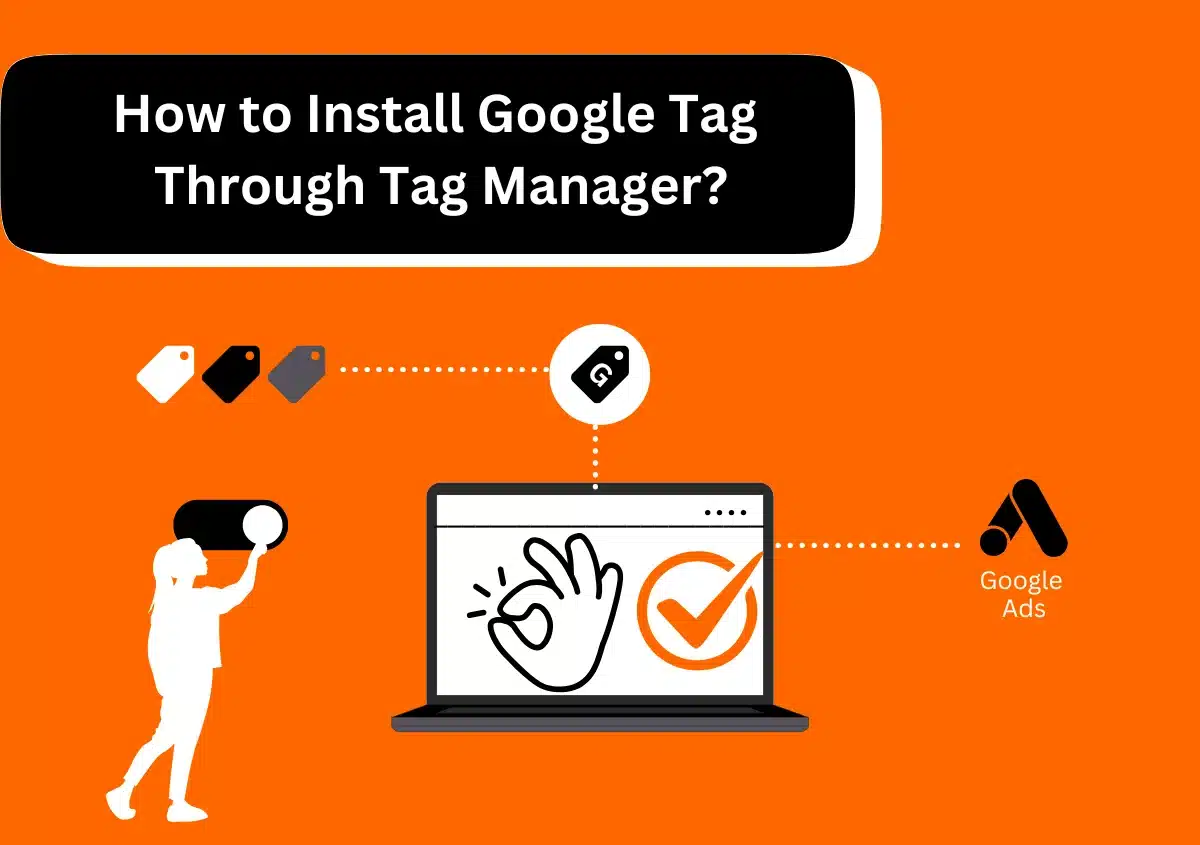
- About Us
- Design & Development
- Digital Marketing
- Analyze & Optimize
- Technologies
- Shopify Experts Agency
- Shopify Marketing Agency
- Shopify Support
- Shopify SEO Agency
- Shopify SEM Services
- Shopify SMM Services
- Shopify Web Design Agency
- Shopify Theme Development Services
- Shopify Theme Customization Services
- Shopify App Development Company
- Shopify Analytics
- Shopify CRO Agency
- Shopify Store Setup Services
- Shopify Product Description Services
- Shopify Email Marketing Services
- Shopify Content Writing Services
- Shopify Consulting Services
- Shopify Maintenance Services
- Shopify Speed Optimization Service Agency
- Shopify Migration Services
- Shopify Product & Collection Setup Services
- Shopify Marketing & Sales Consulting Services
- Shopify Content Marketing Services
- Shopify Logo & Visual Branding Services
- Shopify Brand Strategy Services
- Shopify Custom Domain Setup Services
- Shopify Business Strategy Consulting Services
- Shopify Sales Channels Setup Services
- Shopify Photo Editing Services
- Shopify Banner Ads Services
- Node JS Development Company
- PHP Development Services
- WordPress Development Services
- WooCommerce Development Services
- Magento Design & Development Services
- Joomla Development Services
- Drupal Development Services
- ReactJS Development Services
- Laravel Development Services
- HTML5 Development Services
- CodeIgniter Development Services
- AngularJS Development Services
- Shopify Experts Agency
- Blog
- Contact Us
#1 ReactJS Development Company
Full-Scale ReactJS Development Services
Create distinctly creative, dependable, high-performing single-page web apps and mobile apps that establish industry trends. Accelerate ReactJS Development with us.
/ 5.0

Happy customers
Please fill in your details below
to get free quote
We Work With







About Us
Top-Ranked ReactJS Development Company
We are a top-rated ReactJS development company with skilled professionals who can create cutting-edge web applications that your users will find entertaining and pleasant. To enhance user experience and guide you towards increased conversion rates, we leverage the power of this modern framework. Let us create custom React applications that meet your business needs. We possess strong ES6 knowledge and a firm grasp of the principles of JSX. Connect today.
Why Choose React for Web Development?
Reliable front end development, adaptable UI and component based architecture makes React a popular choice.
Efficient Code Reuse Facility
React uses a component-based architecture, which makes it cost-effective as components could also be utilized in other projects. This is an efficient code reusability facility.
SEO Friendliness
Because of React’s server-side rendering and lightweight virtual DOM, it helps in SEO. Search engine crawlers can easily navigate web pages when they are visible and ranked.
Testability of Apps
React is the best framework for test automation since a modular composition makes it highly graspable, and reliable, and assures simple maintenance checks of mobile apps performance.
Vast Community of Developers
React has full support, resources, and tremendous collaboration. It helps with crafting novel ideas and innovation and trouble-free growth of development projects.
Hassle-free reusability of components
React’s component variant improves the reusability of components. Therefore, projects can scale unvarying components and are simple to maintain regularly.
High performance reinforced by Virtual DOM
React minimizes DOM updates to offer excellent performance. Hence, rendering is competent, the user interface feels responsive, and the resources are comfortable handling.
Powers of Flux and Redux
React works well with Flux and Redux, making it easy to manage their powerful state and data flow architectures that are suitable for large and long-lasting applications.
Better code stability
Downward data flow and React’s component-based architecture make the code easier to follow and sustain, ultimately benefiting its stability. The code is stable and ready for any modifications.
Fast Rendering
React’s virtual DOM enables fast rendering algorithms. User interface displays are quickly done. It results in uninterrupted good performances on various devices and operating systems.
ToolKit support
The React ecosystem comprises many toolkits and extensions like React 360, jest, and Visual Studio code extensions, which ease coder development and enhance their productivity.
Rich User Interface
React allows users to have a fancy user interface due to its nature of declarative components. Rich user interfaces make an application interactive and more inviting to the end-user.
Availability of extensions
The React ecosystem has many extensions and packages to make sure development environments have all the necessary tools to make a developer productive and code readable.
ReactJS Development Services We Provide
We Build Futuristic Web Solutions using React.js that Deliver Results.
1/ React.js Native App Development
Our React Native development crafts high-performance, cross-platform mobile apps, reaching wider audiences with intuitive interfaces and seamless performance.
2/ React UI/UX Design & Development
We guarantee a user-friendly experience using React’s modular architecture and cutting-edge tools like Material-UI and Ant Design (for style components) and Framer Motion and React Spring (for animations).
3/ Custom ReactJS Development
For smooth data flow, we design component-driven architecture to handle state and props. For quality and dependability, we employ industry-standard testing frameworks like Jest for thorough unit and integration testing.
4/ React JS APIs Integration
We utilize XMLHttpRequest, Fetch API, and Axios, all of which can facilitate HTTP requests within a React application. Your project requirements will determine which option is best for you.
5/ ReactJS Product Development
We harness the power of React to create innovative and scalable product development solutions, ensuring high-performance, user-friendly interfaces for engaging digital experiences across platforms.
6/ React Mobile Web Apps Development
We utilize the ReactJS library to create interactive user interfaces and web apps. This lets our developers produce reusable UI components, contributing to the development process’ increased effectiveness.
7/ Upgrading ReactJS
We deliver expert ReactJS upgradation services to stay current with the latest features and improvements. It ensures it performs as it should, staying abreast with new technical advancements.
8/ ReactJS E-Commerce Development
We leverage ReactJS to create high-performing user-friendly e-commerce websites that work flawlessly across devices. By doing this, you may reach a wider audience and maximize your internet visibility.
9/ React Mobile Apps Development
With the React Native framework and ReactJS library, we create a cross-platform, natively rendered mobile app development solution that is feature-rich, highly integrated, and business-oriented. This drives quicker time-to-market and performance.
10/ ReactJS App Porting and Migration Service
For web apps experiencing high bounce rates and slow loading speeds, we can transition to ReactJS for your mission-critical projects to improve user experience, security, scalability, responsiveness, and code reusability.
11/ ReactJS Plugins and Widgets Development
We use the ReactJS front-end library’s versatility to design unique plugins, extensions, and widgets that will enhance the functionality and usability of your business-focused online and mobile apps.
11/ React Maintenance and Support
Minimize errors, guarantee peak performance, and reduce downtime. We also handle compatibility checks and regular security patching. In the ever-changing digital world, we make sure your application is always current.
The React Ecosystem We Use
React Core Frameworks, Like React Native, Redux, Next.Js And More.
1/ Core Frameworks & Libraries
- React (React JS)
- React Native
- Next.js
- Gatsby
2/ Form & Routing Management
- React Router
- React Hook Form
- Formik
3/ State Management
- MobX
- Redux
- React Query
- Apollo Client
4/ Code Handling and Optimization
- Webpack
- TypeScript
- ESLint
- Rollup
- Parcel
5/ User Interface Development
- Material-UI
- Chakra UI
- Reactstrap
- Styled Components
- Emotion
6/ Testing and Validation
- React Testing Library
- Jest
- Enzyme
- Cypress
- Yup
Our ReactJS Development Process
From Ideation to Launch to post support, our process excellence makes it like a cool breeze.
1/ Project Discovery and Analysis
We learn about your business requirements and strategic goals. This provides us with the knowledge we need to design the roadmap for building the application following our technical decisions.
2/ UI/UX Design
We then design user-friendly interfaces and near-perfect navigation. We also create user experiences that ensure excellent customer satisfaction and achieve the project objectives and goals with maximum efficiency.
3/ Development and Implementation
Our experienced developers put down strategies to actualize the project. We then use top-notch technologies that will eventually make the developing process more efficient and robust.
4/ Testing and Quality Assurance
Rigorous testing and quality assurance processes validate the functionality, performance, and reliability of the developed solution. This ensures the best product goes out to the client.
5/ Deployment
We then deploy the finalized product seamlessly. We integrate it smoothly with other feature-rich functionalities and apps, making it accessible to end-users without causing any disruptions.
6/ Maintenance and Support
Continuous maintenance to ensure that the system continues to function as designed. Additionally, consistent support to address any issues that might threaten its functionality is required.
Why Us?
Top-Notch ReactJS Development Agency
We have a proven track record of developing incredible ReactJS development services designed to meet your unique business.

Years of experience
Expert team
Leads generated
1/ Dedicated Developers
Our React developers can handle any project. We only bring you, top-tier professionals, who have undergone thorough screening and who have a strong combination of technical and people skills.
2/ Focus on Your Core Business
We guarantee that you receive undivided attention and expertise in project development—we enable you to focus on your main business as we take on your web development responsibilities.
3/ Bespoke Solutions
We employ project-appropriate technologies and, if necessary, can integrate React with your current systems, providing customizable engagement modes. You can confidently outsource your ReactJS development needs to us.
4/ Robust Security Measures
We prioritize thorough QA testing, focusing on project security. We enforce strong non-disclosure agreements, keep safe code repositories, and maintain stringent security standards to safeguard your intellectual property.
5/ Strict NDA Signed for Complete Privacy
We give top priority to confidentiality, and thus, we sign a strict Non-Disclosure Agreement for every React project that we take on to ensure complete privacy and reliability.
What Our Clients Say?
Your Partner With 15+ Years Of Expertise
“Partnering with Website Pandas for PPC has been the best decision for us. The team helped us save money on AdWords advertising while boosting the lead count. We could not even imagine creating and managing AdWords the way Website Pandas did. Now we know that we can successfully compete with our competitors.”

Mike Johnson
“The PPC team at Website Pandas should be the go-to choice for search engine marketing. They are responsive, accountable, and extremely knowledgeable. I loved how the experts here solely focus on client results and ROI. Their resources and PPC strategies have helped me drive maximum awareness and conversion.”

Shane Smith
“Working with Website Pandas has been an absolutely amazing experience. They’ve been our partners for over six years now, and there is nothing I would complain about. The team does everything to make your business unique and at the top of web searches. I would highly recommend the agency to anyone looking to improve their online presence.”

Matt McVicker
“Website Pandas seamlessly executed our digital marketing strategy with impressive skill. The team showed us how Google can be used in innovative ways. Our company has experienced consistent and exponential growth on channels that didn’t work for us before. Now, we consider Website Pandas more of an extension of our company than a partner.”

Sarah Walker
Case Studies
Be Part Of Our Success Stories


Beach Business Boom: SEO & Ads Campaign that Quintupled Revenue

From Stagnant to Soaring: A B2B’s Explosive Growth with Google Ads!
FAQs
Find Answers To Commonly Asked Questions
What are ReactJS services?
ReactJS development services include the optimal use of the React JavaScript library in developing web applications. These services can be anything from React app development, UI/UX design, and front-end and back-end development to testing, deployment, maintenance, and customer support, depending on your business needs.
How much does it cost to hire a ReactJS developer?
It varies. The features you are integrating, the engagement model, business goals, and location, the resources you are hiring are some of the variables that affect the overall cost of hiring a developer for ReactJS development services.
Is ReactJS still in demand?
It’s highly preferred. ReactJS is still widely used in the development of current online apps, and businesses continue to choose it for prospective projects. ReactJS will therefore be needed in 2024 for both developing new apps and maintaining current ones.
What is the difference between React and Angular services?
Angular is a front-end framework, while React is a JavaScript library. Whereas Angular employs real DOM and two-way data binding, React uses virtual DOM and one-way data binding. Because React has a smaller bundle size than Angular, it is quicker.
What is the difference between React Native & React JS?
React Native uses native UI components and APIs to build mobile applications, whereas React uses CSS, JavaScript, and HTML to create interactive user interfaces. Using a virtual DOM, React.js renders browser code, and React Native leverages Native API for generating mobile app components.
What are React JS Components?
One is a self-contained module that contains a section of the user interface and the logic that goes with it. It might be as simple as a button or as intricate as a whole program. Dividing a user interface into smaller, separate parts, and components enables developers to write modular, reusable, and maintainable code. This facilitates code navigation, problem-solving, and future modifications and upgrades to the project.
What are Hooks in React?
When using state and other React capabilities in functional components, a “hook” is a particular function in React. React developers can now build more reusable and modular code thanks to hooks, which let components exchange stateful behavior. They have lessened the boilerplate code quantity that developers must create and helped to simplify React code.
How is the website Pandas the best choice for my ReactJS development project?
For all ReactJS development projects undertaken, we guarantee unmatched ReactJS development services with a focus on the client. Using agile methodology makes us deadline-driven and is tailored to your project scope. Expect top results from our high-caliber development team.
Do you use any project management tools?
We employ widely used project management platforms such as Jira, Trello, Asana, and Pivotal Tracker. This is where you can monitor your project’s daily development and track the developers’ productivity of developers. You can also assign a task and track its advancement.
Do you provide NDA and IP protection for my project?
You can be confident that you will own your project entirely. It covers NDAs, other Memorandums of Understanding, copyright, source code, intellectual property rights, and other critical terms of the services.
Latest Posts
Stay Informed And Inspired

How to Setup Google Tag Through Tag Manager?

Can You Remove Conversion Action in Google Ads Editor? Quick Guide 2025

WordPress to Shopify Migration: A Comprehensive Guide 2025
Newsletter
Subscribe For Updates And Insights
